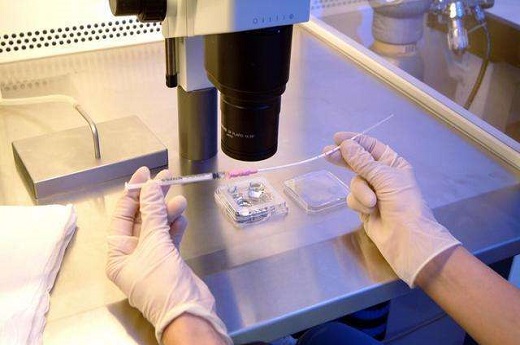The Current Situation of IVF in Sichuan: An Overview
In recent years, the landscape of in vitro fertilization (IVF) in Sichuan has undergone significant changes. This article provides an in-depth analysis of the current status of IVF in Sichuan, covering various aspects including technological advancements, accessibility, success rates, ethical considerations, government support, and future prospects. Through this exploration, readers will gain a comprehensive understanding of the evolving dynamics of IVF in the region.
Technological Advancements
Technological advancements have played a pivotal role in shaping the landscape of IVF in Sichuan. With the introduction of cutting-edge techniques such as preimplantation genetic testing (PGT) and time-lapse imaging, fertility clinics in Sichuan have been able to enhance the success rates of IVF procedures. Moreover, the integration of artificial intelligence (AI) algorithms in embryo selection has revolutionized the way embryos are evaluated, leading to improved outcomes for patients.

技术的进步在塑造四川试管婴儿的格局中发挥了至关重要的作用。随着先进技术的引入,如胚胎植入前基因检测(PGT)和时间-lapse成像,四川的生育诊所已能够提高试管婴儿程序的成功率。人工智能算法在胚胎选择中的应用已经改变了胚胎评估的方式,为患者带来了更好的结果。
Furthermore, the adoption of minimally invasive techniques such as vitrification has optimized the cryopreservation process, ensuring the viability of frozen embryos for extended periods. These technological innovations have not only increased the efficiency of IVF procedures but have also expanded the scope of treatment options available to couples facing infertility challenges.
采用诸如玻璃化等微创技术已经优化了冷冻过程,确保了冷冻胚胎在延长期间的存活性。这些技术创新不仅提高了试管婴儿程序的效率,还扩大了面临不孕症挑战的夫妇可选择的治疗范围。

Accessibility and Affordability
Despite the technological advancements, accessibility and affordability remain key concerns for individuals seeking IVF treatment in Sichuan. While major cities like Chengdu boast state-of-the-art fertility clinics, rural areas often lack adequate infrastructure and expertise in reproductive medicine. This urban-rural disparity in access to IVF services underscores the need for targeted interventions to ensure equitable distribution of reproductive healthcare resources across the region.
尽管技术进步,但在四川寻求试管婴儿治疗的个人仍然面临着可及性和负担能力的关键问题。虽然像成都这样的大城市拥有先进的生育诊所,但农村地区通常缺乏充足的生殖医学基础设施和专业知识。城乡之间在获得试管婴儿服务方面的差距突显了需要有针对性的干预措施,以确保该地区生殖保健资源的公平分配。
Additionally, the financial burden associated with IVF treatment remains a barrier for many couples, particularly those from low-income backgrounds. While some provinces offer partial reimbursement or insurance coverage for fertility treatments, the lack of comprehensive financial support schemes poses challenges for individuals seeking IVF in Sichuan. Addressing the affordability gap is crucial to ensure that all couples have equal opportunities to pursue their dreams of parenthood.

与试管婴儿治疗相关的财务负担仍然是许多夫妇的障碍,特别是那些来自低收入背景的夫妇。虽然一些省份为生育治疗提供部分报销或保险覆盖,但缺乏全面的财务支持计划对于在四川寻求试管婴儿的个人而言存在挑战。解决经济负担差距对于确保所有夫妇都有平等的机会追求育儿梦想至关重要。
Success Rates and Clinical Outcomes
The success rates of IVF procedures in Sichuan have shown steady improvement in recent years, reflecting advancements in both technology and clinical practice. Fertility clinics across the region have reported higher pregnancy rates and lower rates of complications, indicating enhanced efficacy and safety of IVF treatments. Additionally, the implementation of personalized treatment protocols tailored to the specific needs of each patient has contributed to





